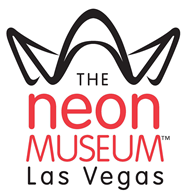
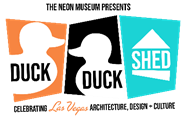
Is it a Duck or a Decorated Shed?
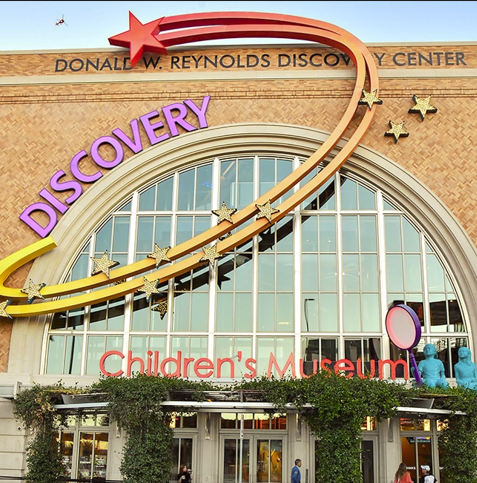

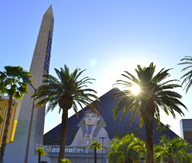
In one month – The Neon Museum presents Duck Duck Shed:
Celebrating Las Vegas Architecture, Design, and Culture, Oct. 27-30
The Neon Museum, one of Las Vegas’ most iconic and visually stunning museums that tells the story of the city through historic neon signs, announces the full line-up of its upcoming and inaugural four-day event entitled Duck Duck Shed: Celebrating Las Vegas Architecture, Design, and Culture, Oct. 27-30 – while simultaneously igniting a “provocative” discussion relative to the massive hotel/casinos that line the Las Vegas Strip via this thought-provoking question: “is it a duck or a shed?”
Duck Duck Shed is focused on the themes first identified in the seminal text “Learning from Las Vegas” by Denise Scott Brown, Robert Venturi, and Steven Izenour, which celebrates its 50th year since its initial printing and is still considered required reading in many universities’ architecture programs. The authors penned the idea that buildings are either “ducks” that explicitly and literally represent their function through their unique shape and design, or “decorated sheds” that are buildings that require a sign to differentiate one from another. Examples of this academic concept over the course of Las Vegas history include the Tropicana which opened in 1957 and Resorts World that opened just last year as “decorated sheds,” and the Excalibur, Luxor and Circus Circus as “ducks.”
The four-day event has more than three dozen individual offerings that celebrate Las Vegas’ iconic architecture from past to the present, including walking tours, aerial tours, sessions with industry experts, and once-in-a-lifetime tours of Jungle Palace, the historic estate of Siegfried & Roy, a private home that has never been granted public access. Due to overwhelming interest, many Duck Duck Shed tours and programs have already sold out, and more offerings are being added as a result.
Some of Duck Duck Shed’s featured programs include “The View from Flamingo Road: How Las Vegas Mastered Modernism” with Alan Hess; “The Gilded Cage: The Psychology of a Casino’s Architecture” with architects Brian Fink, Jon Sparer, and Mitchell Trageton; “Two Perspectives on Paul Revere Williams” with photographer Janna Ireland and Carmen Beals, associate curator and outreach director of the Nevada Museum of Art; “The Wayward Eye Exhibition – Photography of Denise Scott Brown”; and “The Local Lore of Downtown: A Walking Tour of Iconic Casinos.”
These programs and others will be led by nationally acclaimed speakers (download bios here.) Many of the speakers are also available for interviews in advance of Duck Duck Shed, including:
- Alan Hess — author, historian, urban planner, architect, and advocate for twentieth-century architectural preservation.
- Jon Sparer — famed architect behind prestigious international resorts as well as the Mirage, Paris Las Vegas, and Bellagio in Las Vegas.
- Janna Ireland – acclaimed photographer who was recently featured in the New York Times for her exhibition on Paul Revere Williams, a trailblazing Black architect who designed many buildings in Las Vegas and beyond and whose work will also be featured in Duck Duck Shed.
- Jose Gamez – associate director of the School of Architecture in the College of Arts + Architecture at the University of North Carolina – Charlotte. His research explores questions of culture in architecture and urbanism.
All Duck Duck Shed programming is offered on an a la carte basis so attendees can attend the programs of their choice and that best meet their schedules. For full details on event programming and to sign up for any of the tours, exhibits or lectures, visit www.duckduckshed.com and follow @duckduckshed on Instagram, Twitter and Facebook.
To highlight the event theme, over the coming weeks, staff from The Neon Museum will channel their late-night talk show host personalities as they conduct man-on-the-street interviews quizzing Museum visitors on whether Las Vegas hotel/casinos are Ducks or Decorated Sheds? Video snippets from these interviews will publish on the Museum’s social media channels as part of an overall goal to raise awareness about the influence of Las Vegas architecture and Duck Duck Shed.
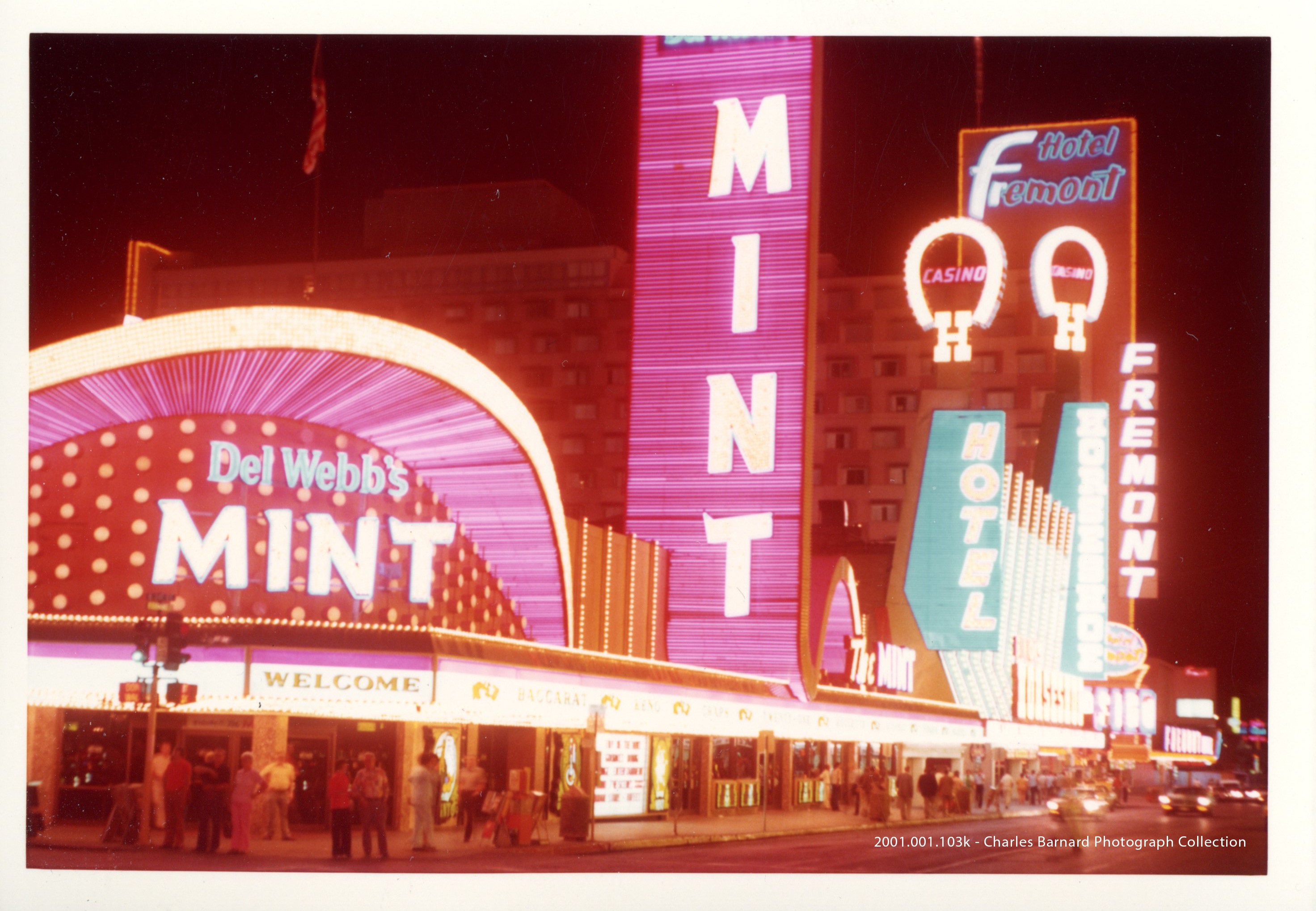
ABOUT THE NEON MUSEUM
Founded in 1996, The Neon Museum is a non-profit 501(c)3 organization dedicated to collecting, preserving, studying, and exhibiting iconic Las Vegas signs for educational, historic, arts and cultural enrichment. Fully accredited by the American Alliance of Museums (AAM), The Neon Museum has been ranked No. 1 in Las Vegas Weekly’s list of “Twenty Greatest Attractions in Las Vegas History,” Nevada’s “Best Museum” by MSN, No. 1 Pop Culture museum and one of the 10 Best Museums in Las Vegas by USA Today’s 10best.com, “One of the Top 10 Coolest Things You Didn’t Know You Could Do” by Forbes.com, one of the “Top 10 Historic Spots in Las Vegas” by Vegas.com; one of “15 Most Fascinating Museums in the U.S.” by VacationIdea.com; and earns a consistent 4.5 out of 5 rating on TripAdvisor. On its 2.27-acre campus, The Neon Museum has an outdoor exhibition space known as the Neon Boneyard; the North Gallery, home to the immersive audiovisual experience “Brilliant! Jackpot” which uses technology to re-illuminate more than 40 non-operational signs; and its visitors’ center inside the former La Concha Motel lobby. The museum collection also includes nine restored signs installed as public art in downtown Las Vegas. Public education, outreach, research, and arts conservation represent a selection of the museum’s ongoing projects. For more information, including tour schedules and tickets, visit www.neonmuseum.org. Also follow @NeonMuseum on Facebook and Twitter and @theneonmuseumlasvegas on Instagram.
